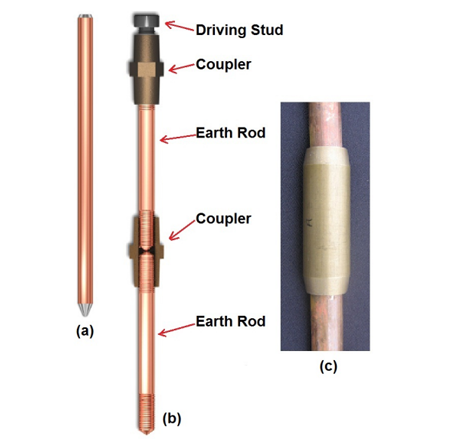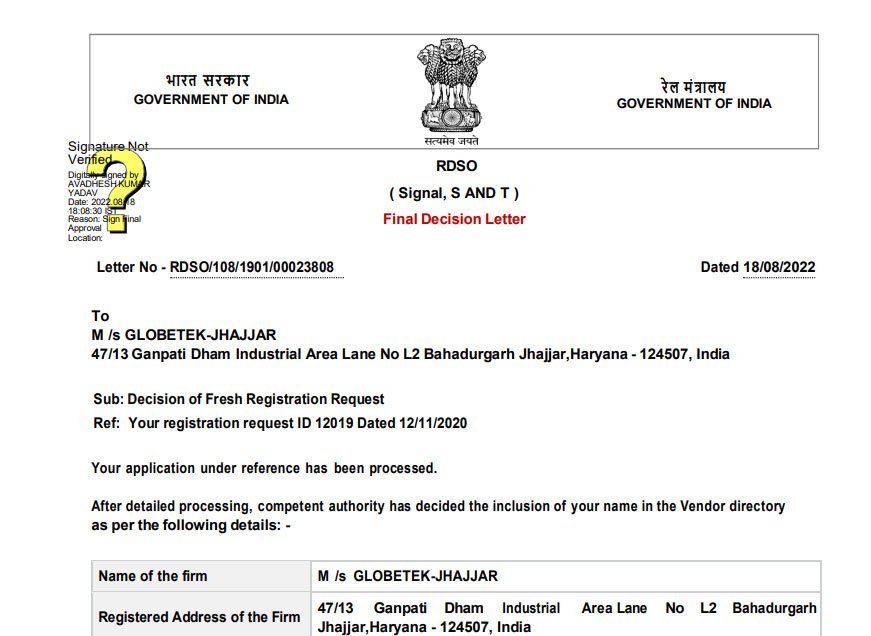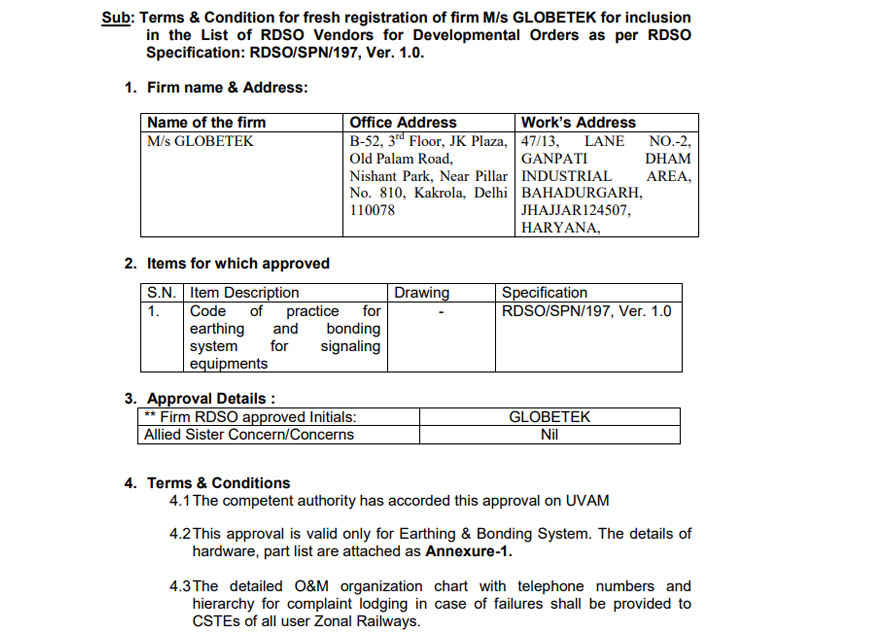
RAILWAY
EARTHING MANUFACTURERS
RAILWAY
EARTHING RDSO APPROVED IN INDIA

Our product range includes a wide range of Railway Earthing RDSO Approved, RDSO Copper Bonded Steel Electrodes, Copper Bonded Steel Electrode, RDSO/SPN/197/2008 Maintenance Free Earth, RDSO/PE/SPEC/PS/0109-2008 Earth Electrode and RITES Inspection RDSO Approved Earthing.
Length of the electrode may be increased in multiple of 1 meter to reduce earth resistance if required. Our product range includes a wide range of RDSO/PE/SPEC/PS/0109-2008 Earth Electrode, Railway Earthing RDSO Approved, RDSO/SPN/197/2008 Maintenance Free Earth and RDSO Approved Maintenance Free Earthing.
SEND ENQUIRY

MAINTENANCE-FREE EARTH & RING EARTH
This type of railway earthing and bonding system is adopted for S&T equipments with solid state components which are more susceptible to damage due to surges, transients and overvoltages being encountered in the system due to lightning, sub-station switching etc. these equipments include Electronic Interlocking, Integrated Power Supply equipment, Digital Axle Counter, Data Logger etc.
This type of earthing arrangement requires no maintenance so called as "Maintenance free earthing" or "Effective Earthing". Effective earthing electrode eliminates problems of conventional earthing:
1. By providing highly corrosion resistant Earthing Electrode.
2. By eliminating the corrosion causing elements in the salt.
3. By providing uniform non corrosive, low soil resistivity material around the electrode.
Railway transportation is a crucial aspect of modern society, providing a reliable means of moving goods and people across vast distances. However, this system's safety and efficiency can be compromised if proper measures are not taken to address electrical safety concerns. One such measure is the installation of railway earthing systems.
Railway earthing is a vital component of railway electrical safety. It is the process of connecting metallic parts of the railway infrastructure to the earth, creating a path for fault currents to flow safely. In this article, we will explore the importance of railway earthing, its benefits, and answer some frequently asked questions.
Why Is Railway Earthing Important?
Ensuring electrical safety is a top priority in the railway industry. This is because high voltage currents are present in the electrical system, and failure to control them can lead to disastrous consequences. Here are some reasons why railway earthing is essential:
1. Protects against electrical shocks
Railway earthing provides a path for fault currents to flow harmlessly into the ground, protecting people from electrical shocks.
2. Prevents equipment damage
Without proper railway earthing, the electrical equipment on board the train and those on the trackside are at risk of damage from electrical surges and spikes.
3. Increases reliability
Railway earthing can help minimize disruptions and downtime caused by electrical faults, leading to improved reliability and fewer delays.
4. Ensures regulatory compliance
Railway earthing is mandatory in many countries and is often required by law. Failure to comply with these regulations can result in hefty fines and legal repercussions.
How Is Railway Earthing Achieved?
Railway earthing is achieved by connecting metallic parts of the railway infrastructure, such as the train, tracks, and signaling equipment, to the earth. This connection is typically made by driving metal rods or plates into the ground and connecting them to the metallic parts of the railway infrastructure using conductors.
The metallic parts of the train, including the wheels, are electrically connected to each other and to the track via the train's pantograph. This connection ensures that the train and the track are at the same electrical potential, preventing electrical discharges and sparking.
FAQs About Railway Earthing
Que 1. What materials are used for railway earthing?
Ans 1. Copper, galvanized steel, and aluminum are commonly used materials for railway earthing. The choice of material depends on factors such as the type of soil, the expected electrical load, and the length of the earthing system.
Que 2. What are the different types of railway earthing systems?
Ans 2. There are three main types of railway earthing systems: single point earthing, multiple point earthing, and continuous earthing. Single point earthing involves connecting a single metallic point to the earth. Multiple point earthing involves connecting several metallic points to the earth. Continuous earthing involves creating a continuous connection between the train and the track.
Que 3. How often should railway earthing systems be inspected?
Ans 3. Railway earthing systems should be inspected at regular intervals to ensure that they are functioning correctly. The frequency of inspection depends on factors such as the type of earthing system, the environment, and the level of usage.
Que 4. What are the consequences of not having proper railway earthing?
Ans 4. Without proper railway earthing, people are at risk of electrical shock, electrical equipment is at risk of damage, and train transportation may be disrupted. Failure to comply with regulations on railway earthing can result in legal repercussions and hefty fines.





















If You Need Any Solution. We Are Available For You !
" your Buildings, Equipments and Belongings "

